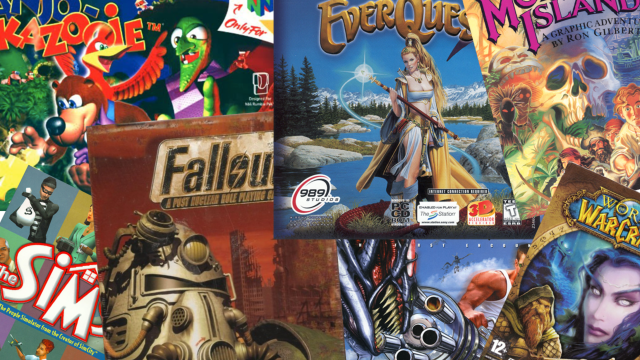Once upon a time you’d walk into an electronics store and marvel at rows of sealed, shiny boxes depicting goblins, swords and (usually) a sexy lady or two. If you didn’t know what game you really wanted, it was the beautiful cases you chose first. The ones with metallic accents, embossed fonts or bright colours. Some were glossy, while others had a rough cardboard feel. Each had their merits, but they all shared one thing in common: older video game box art looked brilliant in a collection.
Today’s video game box art scarcely measures up.
In the era of expanding digital sales and all-digital console releases, box art has paled in importance. We get the odd steelbook or collector’s edition that looks pretty flash, but the art of a good video game box is long gone. Instead, new releases are mostly slapped into generic blu-ray cases and put up on the shelf as an afterthought. It isn’t the art that’s attractive, it’s the game itself.
In some ways, the transition has been good for video games. You should never judge a book by the quality of its cover, and having a homogenous casing system means no game stands out simply for its art. But it also means collecting feels less special. It means ‘physical media’ isn’t as appealing as it once was. There’s no real reason to collect when every case looks the same. Most even use generic fonts and plain white backgrounds on their spines.
Plastic cases just don’t have the same excitement as laminated cardboard or games with ‘peek-a-boo’ style windows and fun gimmicks.

Classic PC game cases often featured bold fantasy art, beautiful paintings or dramatic war scenes. Sometimes there were duds like the original Mega Man artwork, but for the most part a game’s box art was its most important and eye-catching feature. The art was often what made you want to buy the game in the first place.
My earliest experiences with video game box art were titles like The Sims on PC and Pokémon Emerald for Game Boy Advance. Both were housed in fun, brightly-designed cardboard boxes and included the most important video game accessory of all: a manual. You could spend hours leafing through manuals before you even started a game. Some included hints and tips or special pieces of lore. Others just featured nice artwork or instructions. It was a small touch for collectors, but an incredibly important one.


In today’s game cases, you’ll be lucky if you get a single piece of paper included. If you’re very lucky, you’ll wind up with a piece of advertising for another game. Pair the lack of modern manuals with generic game cases, and you’re missing a huge part of what made collecting video games so fun in the 90s and early 2000s.
Presentation was once just as important as the game itself, if not more. Sure it meant you ended up choosing a few bad games along the way, but nothing beat going down to your local Electronics Boutique, Harvey Norman or Dick Smith and picking from the excellent, glossy cases lining the walls. It’s a feeling that’s difficult to recapture in the modern era.
But the reasons for this transition are easily explained.
As the cost of producing video games went up, sacrifices had to be made. ‘Fancy’ cases require more attention, resources and money. But if you put together a CGI render of your main character on a vaguely defined background, you can reduce the overall costs of creation.
Sure, it leads to game boxes plagued by ‘sameness’, but in the digital era it hardly matters. Box art is no longer the sole marketing avenue for developers.

To market video games now we have big, cinematic trailers. We have months-long hype cycles and social media. We don’t need the sexy lady to draw us in. Because of this, box art is a marketing afterthought.
There are some games still bucking the trend and leaning into the cardboardy goodness of older games like World of Warcraft. But the art and panache of the 90s and early 2000s is mostly gone.
Physical media is no longer how most people play games. Bricks and mortar stores are struggling, with digital becoming the norm. As we continue down this path, it’s likely the concept of ‘box art’ will evolve even further. It could be that 5 or 10 years down the track, physical media becomes almost completely obsolete.
Box art could be relegated to digital storefronts and console homepages. From a cost and convenience perspective, it absolutely makes sense — but collectors will suffer in the transition.

In the future, the beauty of classic game box art will be lost entirely. Change is an important part of any industry. But it’s going to be mighty hard to beat the feeling of bringing home a pretty new box for your collection. Digital games will never replicate the quiet calm of leafing through a game manual post-shopping trip, or smelling the fresh ink on the pages.
They’ll also never give us the Gran Turismo 2 ‘scratch and sniff’ gaming experience we all deserve. Video game box art may be changing, but at least we’ll always have the gritty, tar-smelling memories.

Leave a Reply